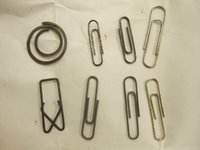Steve Jobs Stanford Commencement AddressIn addition to being a college dropout, he's been fired from the company he started, and been diagnosed with cancer. In spite of that he says:
"Again, you can't connect the dots looking forward; you can only connect them looking backwards. So you have to trust that the dots will somehow connect in your future. You have to trust in something — your gut, destiny, life, karma, whatever. This approach has never let me down, and it has made all the difference in my life."How long ago do you think that he started the strategy that has resulted in the iPod, iTunes and now the Intel-based Macs? (A brilliant strategy. How long before corporations see the value of moving to the Macintosh platform?)
He's proved that a company doesn't have to be the size or scope of Microsoft, as long as it's focused and creates products that are preferred by its customers.
And although he's surrounded himself with product designers and those capable of executing the vision he has set forth, it's largely in part to him that Apple has enjoyed this success. He is the quintessential entrepreneur and business leader.
Truly remarkable. Thanks Steve!
